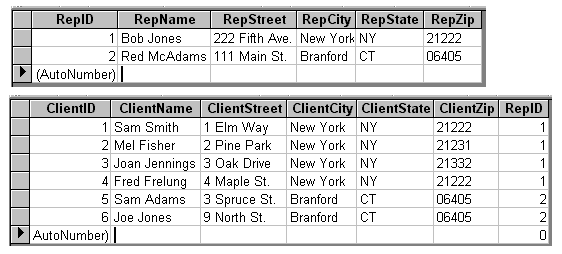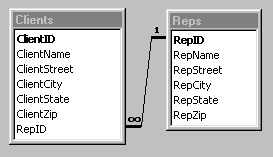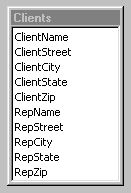 |
 |
|
|
|
|
|
|
|
|
|
|
|
|
|
|
|
|
 |
| Click below to see some references: |
 |
 |
 |
 |
 |
Introduction to Relational Database DesignLet's begin with an example. The Problem
Here's an example of what the data looked like:
Perhaps you can see the problem they had: Every time a sales rep changed his address, they had to re-type his address as many times as that rep had clients - and some of them had over 20! Obviously, this was a terrible waste of time, and it was just asking for errors.
|
 |
Note that we also told the database program to assign a "unique identifer", or "ID", to each sales rep, called a "RepID".
Once this had been done, we were able to remove all the sales rep information from the clients table and replace it with just the unique RepID:
 |
The clients table is now half the size it was!
And, thanks to the built-in features of modern "relational" databases, our customer can still print the sales rep's name and address on their letters. Using the RepID, the printing program simply "looks up" the sales rep information it needs from the Rep table.
As is standard procedure, we also added a "ClientID" to the clients table. Here are both the new tables together, so you can see better how it works:

What does "relational" mean?
| Here's what the new
"table design" looks like.
Note the lines drawn between the "RepID" field in both tables. This indicates a "relationship" between the two tables. It means that to get the correct sales rep information for any particular client, the system should use the information for the RepID stored for that client. |
 |
|
Copyright © Rachel Peck 2003 - all rights reserved
|




